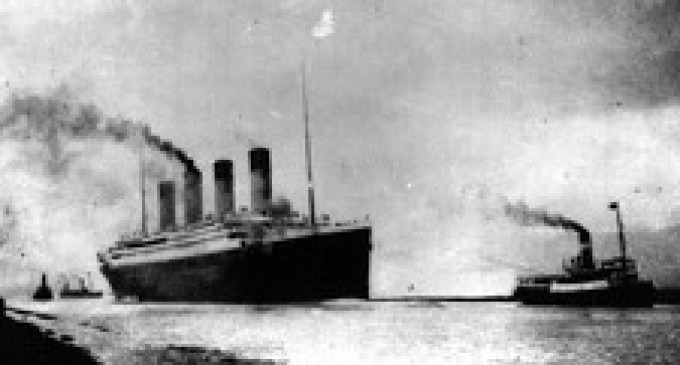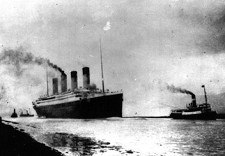1998 FIN – Did Faulty Rivets Sink the Titanic?

FASTENER HISTORY
1998 FIN – Did Faulty Rivets Sink the Titanic?
February 13, 1998 FIN – Two wrought-iron rivets salvaged from the R.M.S. Titanic’s hull were found to contain high concentrations of slag, indicating that the largest ship of its time “may have been done in by structural weaknesses in some of its smallest and least glamorous parts: the rivets,” according to the New York Times.
If the finding holds through further investigation, history may blame fasteners for the death of 1,500 passengers in the 1912 sinking off the coast of Newfoundland during the Titanic’s maiden voyage.
Shipwreck investigators a year ago said underwater sonar dispelled the theory believed for more than eight decades that an iceberg slashed a 100-meter gash in the ship’s hull.
Times reported a high concentration of slag made the rivets “brittle and prone to fracture.” Slag is the glass residue left over from smelting of metallic ores. “We think they popped and allowed the plates to separate and let in the water,” navel architect William Garzke Jr. told the Times.
Garzke, who headed a team of forensic experts investigating the disaster, cautioned that the findings were tentative because of the small number of rivets tested by Timothy Foecke, a metallurgist at the National Institute of Standards & Technology.
With microscopes and image analyzers, Foecke examined just two of the more than 3 million rivets securing steel beams and plates in the 42,000-ton Titanic.
A team of experts “diving down four kilometers to peer through thick mud with sound waves discovered that the Titanic’s bow had been pierced by six thin wounds, the damage apparently done as hull seams were forced open,” instead of sinking from one long hull gash from colliding with an iceberg, Broad reported.
The rivets were inserted from the outside through the steel hull plates and the ends were hammered flat on the inside. The hammered ends of the rivets could have popped off when the ship struck the iceberg.
“The microstructure of the rivets is the most likely candidate for becoming a quantifiable metallurgical factor in the loss of the Titanic.” Foecke concludes in a soon-to-be-released report on the disaster.
Slag Content Three Times Wrought Iron Today
Foecke found 9.3% slag in one rivet in contrast to 2% to 3% in modern wrought iron.
Some slag in wrought iron rivets was necessary because pure iron is very ductile and will bend easily, while slag increases strength. Too much makes the iron brittle.
Broad noted that “it is not clear whether a better grade of rivets would have saved the ship,” but the developing evidence points in that direction.”
“It is also unclear whether such high concentrations of slag were typical for the era of the Titanic’s construction – 1901 to 1912,” Broad pointed out.
“Even if shoddy workmanship becomes a major issue, which would require analysis, all matters of liability were settled long ago,” according to the Times.
First Evidence
Though rivet failure has long been one theory of what caused the disaster, there was no evidence until the wreck was found in 1985 and explorer Robert Ballard reported “plates knocked apart at their riveted seams.”
David Livingstone of Belfast builders Harland & Wolff in a 1996 expedition found a bend of about 90 degrees where the port side had crumpled as the ship struck the bottom, suggesting that the hull steel had a substantial degree of flexibility.
Later sonar experts probing the hull buried in mud found the six narrow slits.
“They appear to follow the hull plate,” Paul Matthias of Narragansett, RI-based Polaris Imaging Inc. told the Times. Matthias speculated that gaps were created when rivets along the seams popped, creating slits no wider than a person’s hand.
Adding to the evidence was damage to the Titanic’s sister ship, the Olympic, which collided with a warship the year before. Thirty-seven rivets were found missing in the minor damage. ©1998/2009 Fastener Industry News
Related Stories:




There are no comments at the moment, do you want to add one?
Write a comment